MSB (Microservice Bus) provides solutions for common challenges in microservices architectures. It uses a service gateway for client access, service registration and discovery to dynamically find services, and centralized authentication for access control. The MSB architecture includes components like the service gateway, service registry, and plugins for additional functionality. It aims to provide high availability, separation of internal and external gateways, and extensibility through a plugin model. Example APIs and services are demonstrated for registration and requests.
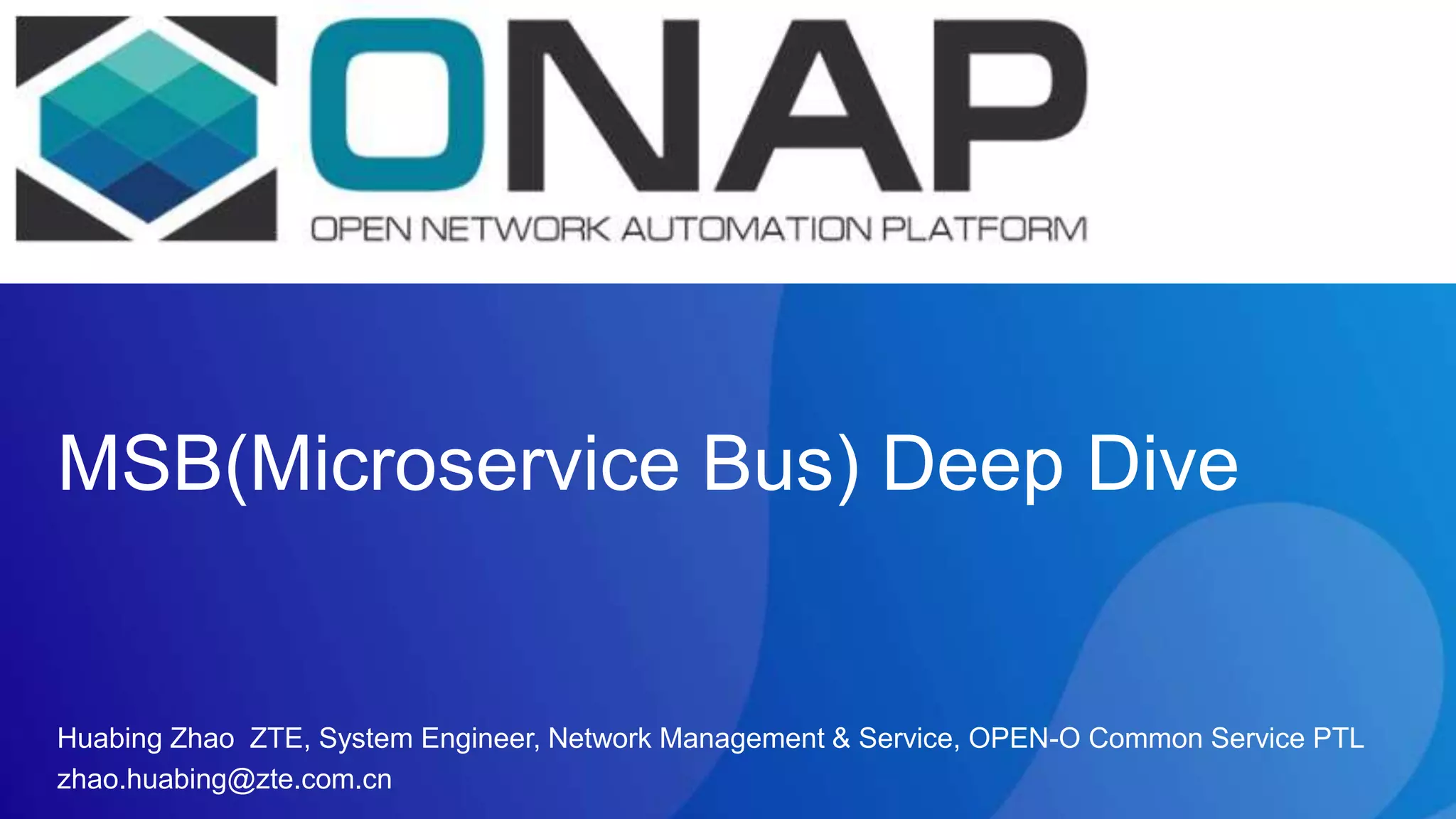
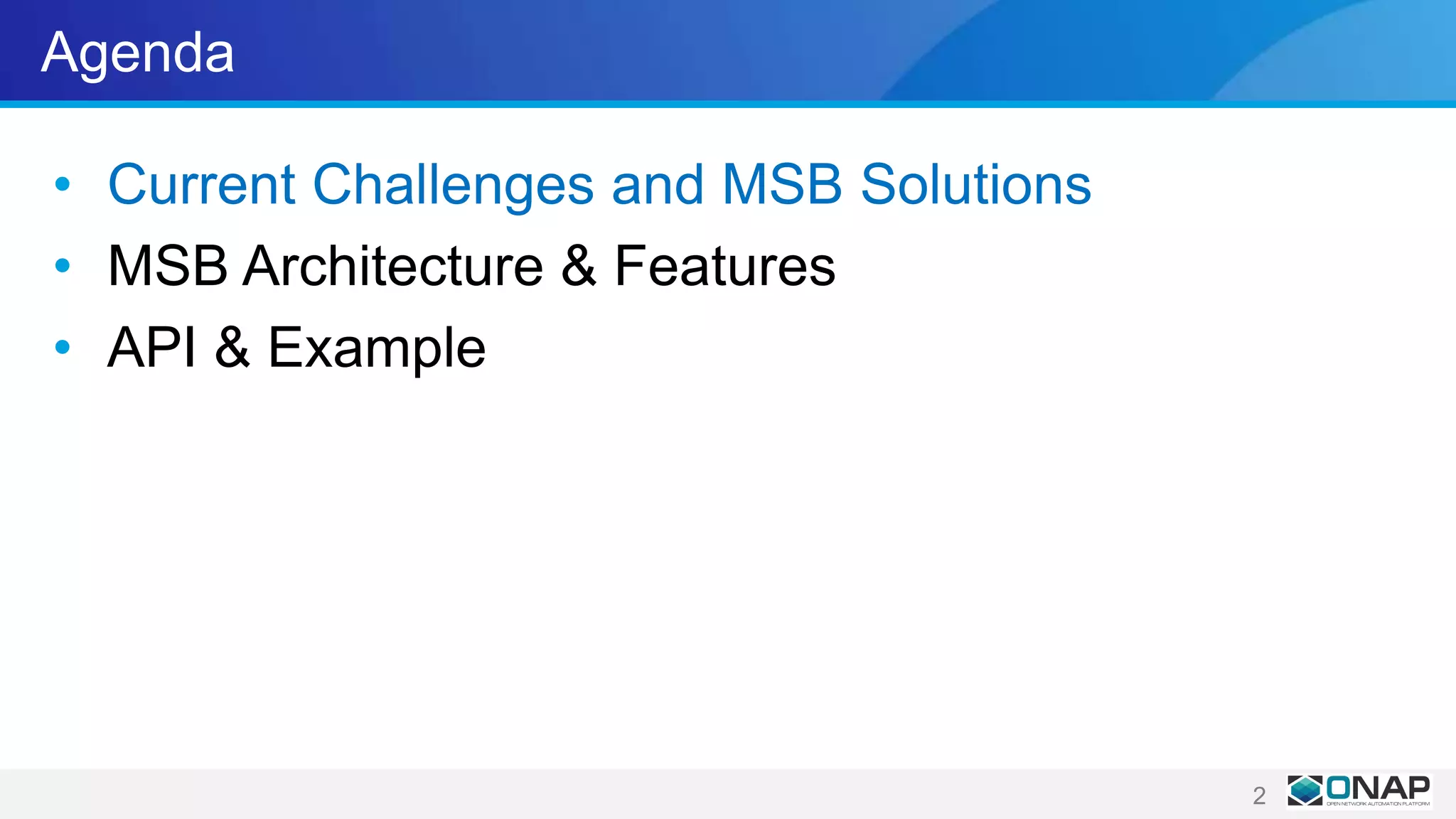
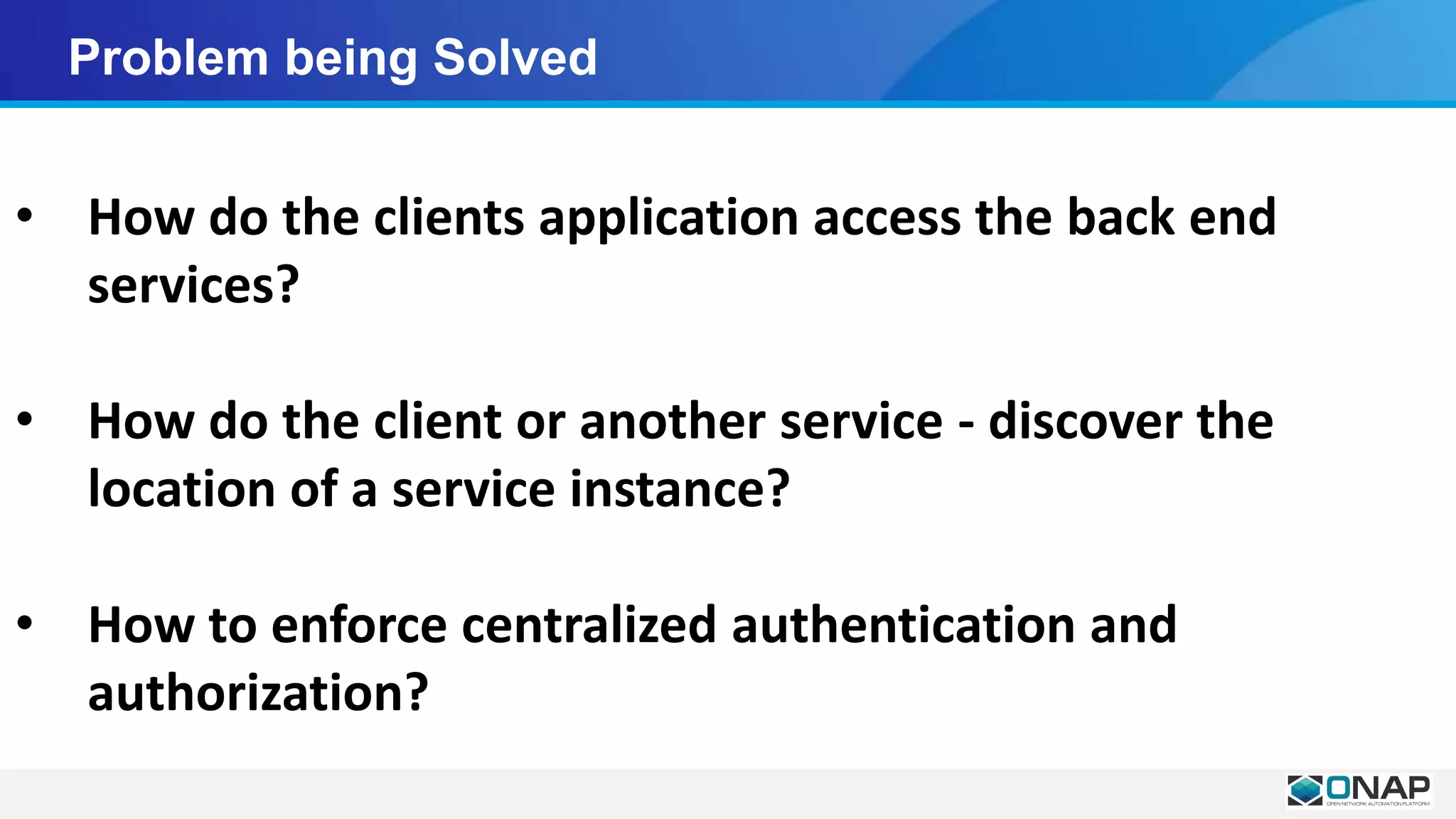
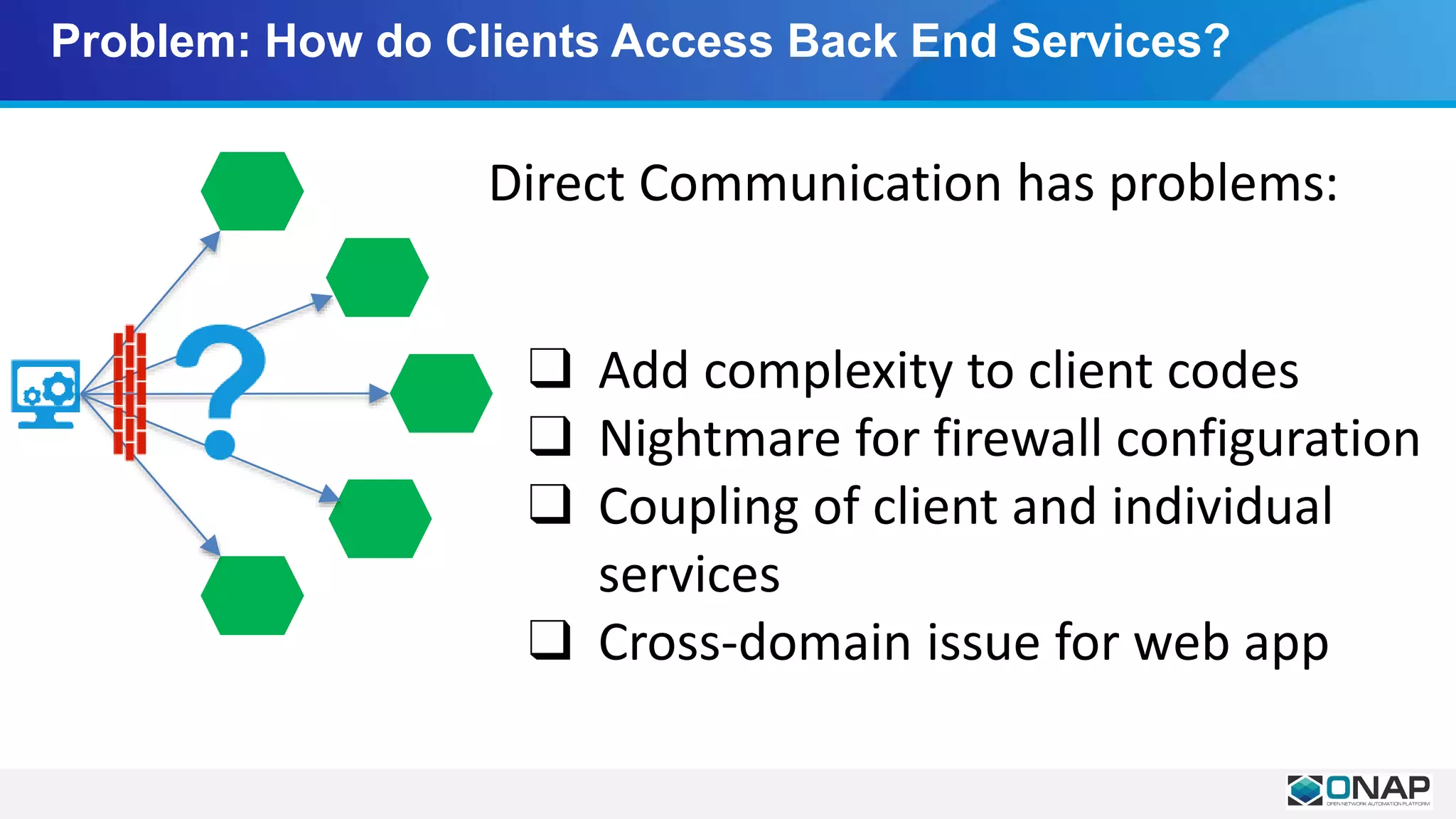
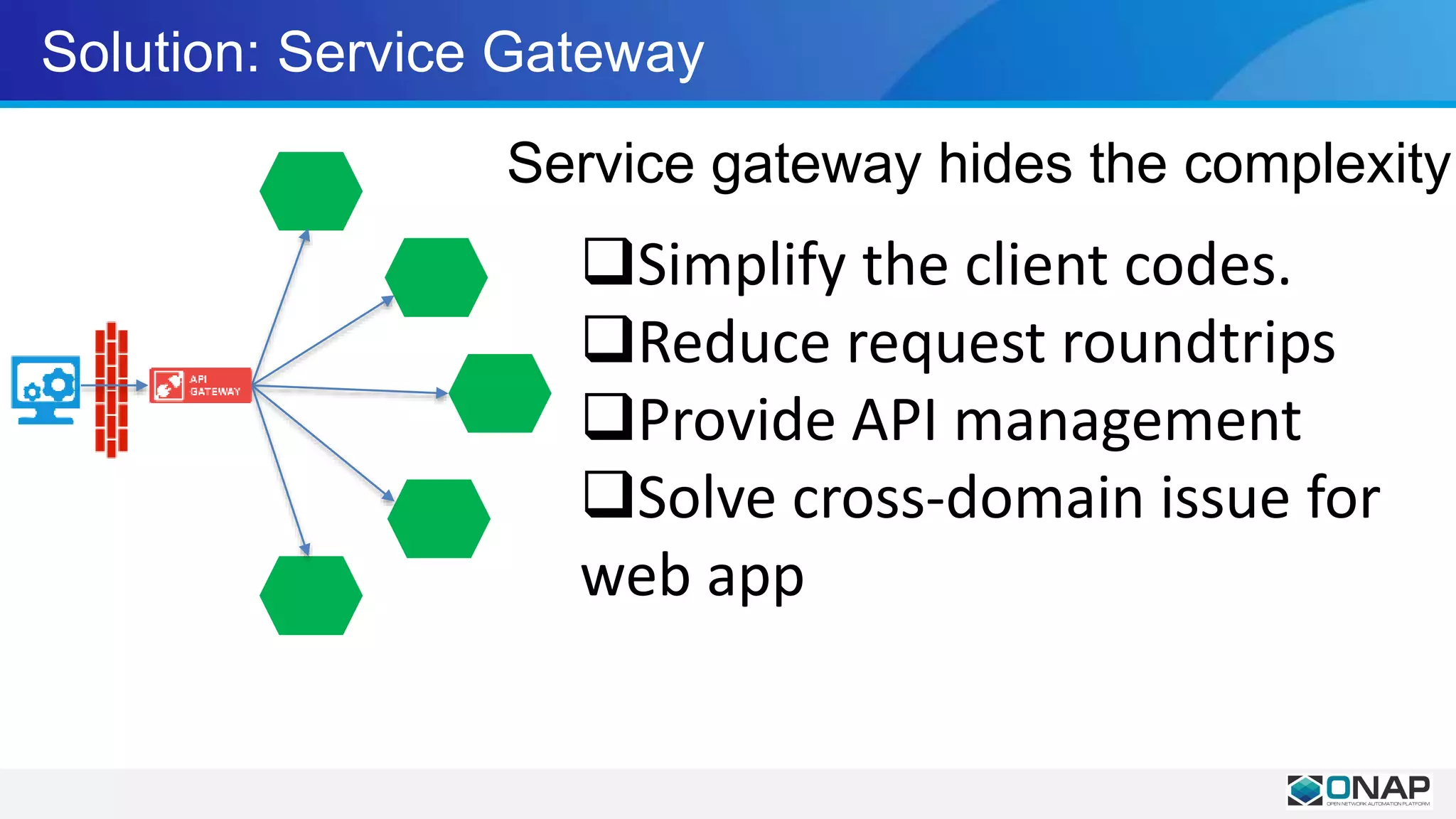

















![Quick Example
Start MSB using docker
sudo docker run -p 80:80 -d --name msb openoint/common-services-msb
Register service
curl -X POST
-H "Content-Type: application/json"
-d '{"serviceName": "weather", "version": "v1", "url": "/openoapi/weatherexample", "protocol":
"REST", "nodes": [ {"ip": "10.0.2.15","port": "9090", "ttl": 0}]}'
"http://127.0.0.1:80/openoapi/microservices/v1/services"
Make request
curl -i -X GET
http://127.0.0.1/openoapi/weather/v1/Middletown](https://image.slidesharecdn.com/msbdeepdive-181217114007/75/MSB-Deep-Dive-23-2048.jpg)
![MSB Resource Address Specification
Attribute Type Description
ServiceName String A unique name for the service.
For GSO, SDNO and NFVO, service name should include the project name as well as the
microservice name to ensure uniqueness, example: 'sdno-l3vpnService'
For O-Common and Common-Tosca, the project name is not necessary in the service name,
example: 'catalog’
ServicesVersion String The version of service, the version should begin with ‘v’, plus a number or major version
number period minor version number
PathInfo String Path information for the resource
Service type Type Query String
API Service Specification [host]:[port]/openoapi/[ServiceName]/[ServicesVersion]/[PathInfo] queryparam1=xxx, queryparam2=xxx
Content Service Specification [host]:[port]/openoui/[PathInfo] None
Example:
log API Service http://127.0.0.1/openoapi/log/v1/syslogs?id=101&filter=admin&count=50
UI Service http://127.0.0.1/openoui/log/index.html
Openoapi and openoui could
be modified to api and ui](https://image.slidesharecdn.com/msbdeepdive-181217114007/75/MSB-Deep-Dive-24-2048.jpg)



